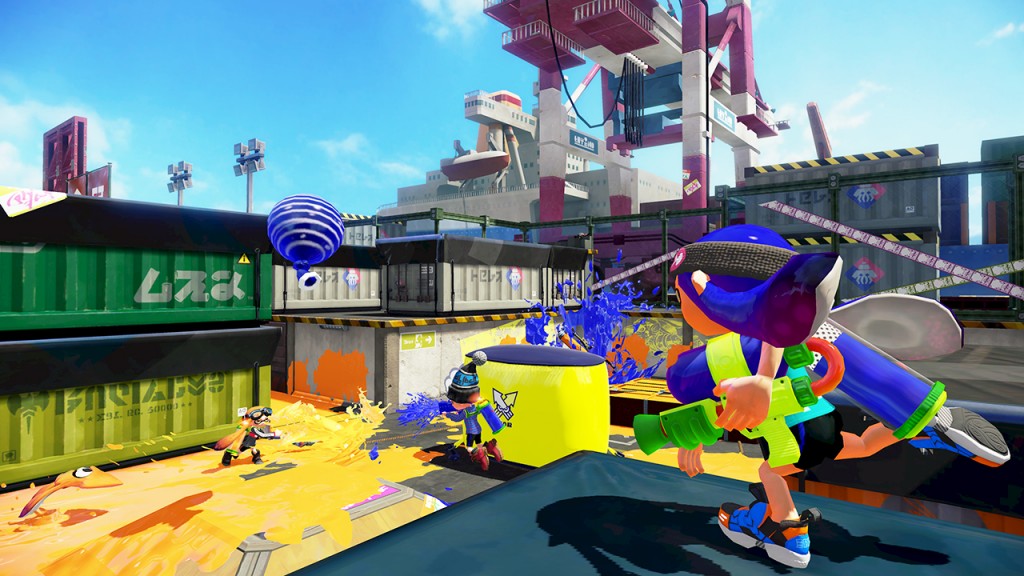
When you hear the phrase “online team-based shooter,” Nintendo is usually the last company you think is involved. The company best-known for colorful, cartoon-like platformers and family-friendly franchise party games has dabbled in competitive online play with recent Mario Kart and Super Smash Bros. titles, but those modes were additional options to their respective games and never the main attractions. But at E3 last year, Nintendo unveiled Splatoon to the world, representing both a new IP and a new approach toward online play from the house that Mario built.
In Splatoon, you control a character known as an Inkling. These special squid-like lifeforms can transform into a bipedal humanoid and back at will. In squid form, they can quickly swim through their own color of ink, even up walls and through fences, and are completely concealed while doing so. In humanoid form, they aren’t quite as mobile, but they can use their ink to power various weapons that they use in battles known as Turf Wars. Ink refills while in squid form, so you’ll be switching back and forth frequently.
If you want to fully enjoy Splatoon, you must play online with at least seven other players, engaging in four-on-four Turf Wars or ranked battles. This is the only way you earn experience and cash. In fact, when you start playing, you will be stuck with the beginning equipment — which is just as efficient as anything you can later unlock, so it’s not really a handicap — until you’ve reached rank 4 via online battles and the shopkeepers recognize your skills.
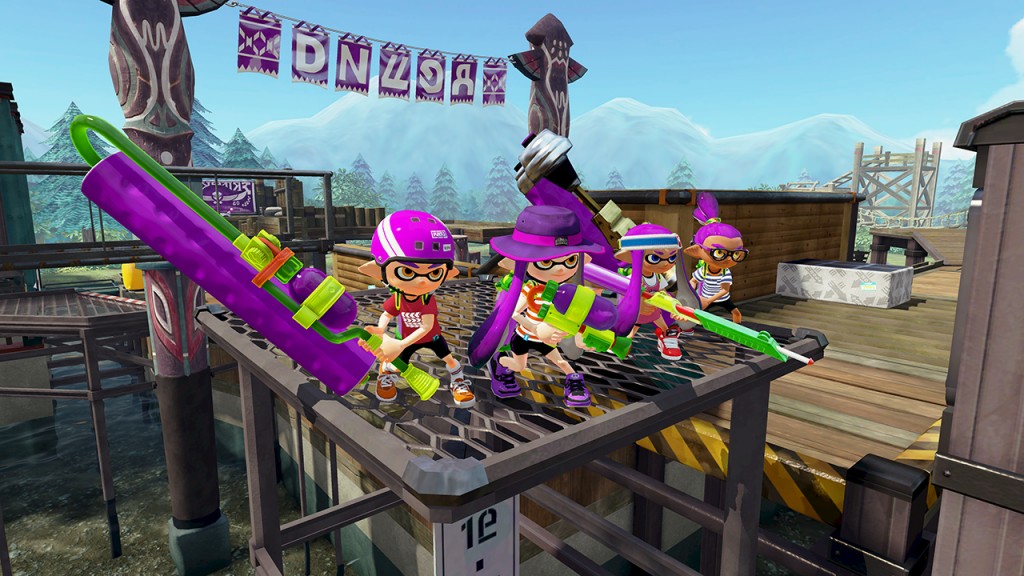
Of course, Splatoon isn’t exactly Call of Duty. In addition to the bright, colorful characters, what sets Splatoon apart from every other online shooter is the fact that you win the fight not though kills (“splats”), but by claiming the most territory by painting it with your team’s color of ink. You can actually go an entire three-minute match ignoring the opposing team completely and still make a significant contribution to your team’s efforts. As long as you’re laying down ink, you’re part of the team.
Turf Wars are a blast, and the three minutes fly by every time. Each map offers different strategic options, with the specific pair of maps currently available rotating several times throughout the day. Even when your team is being destroyed (possibly because one or more of your teammates has dropped their connection, which happens), it’s over so quickly that you can just dust yourself off and head into the next battle without dwelling on it. Teams are randomized, limiting the effectiveness of friends getting together to plan out their strategy ahead of time.
While teamwork is still important, you will have to coordinate efforts with your partners without actually communicating with them. Nintendo has opted to not include any type of chat, voice or text, in order to keep the environment as friendly as possible. Instead, you will have to keep an eye on the GamePad map, which displays each team’s current progress. You can even tap on the location of one of your teammates to super jump directly to them, but beware of being ambushed as your landing zone can be seen by everyone.
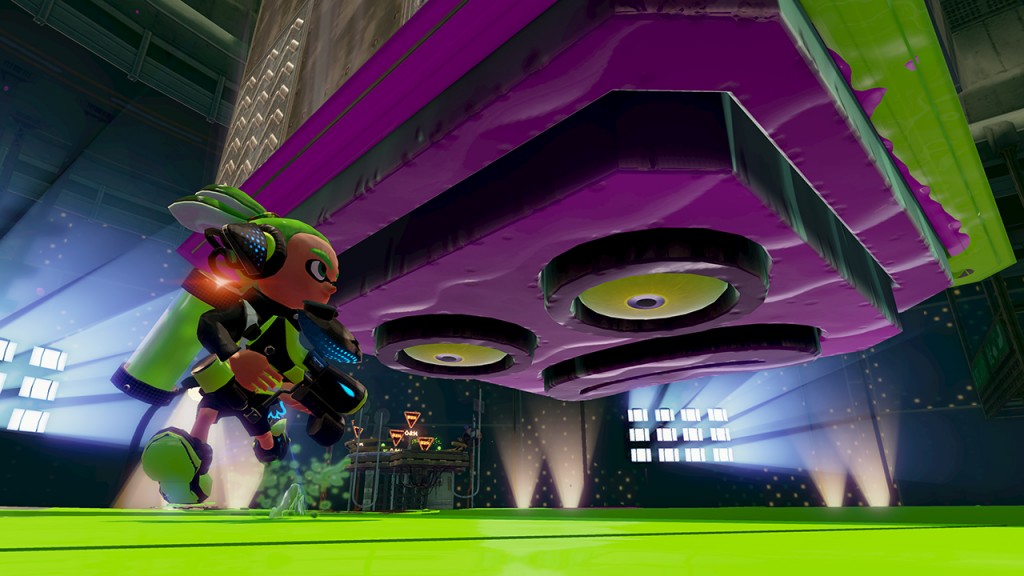
Other than that, you just have to know your role and execute it to the best of your ability. This will largely depend on your weapon loadout of choice. There are three main categories of weapons: rapid-fire splatter guns, long-range charge guns and heavy duty rollers. Each main weapon comes with a corresponding sub-weapon and special weapon to give each combination a unique feel, but you can’t mix and match freely.
You have a bit more control over your gear. Each day, the shops will offer a selection of headgear, tops and shoes that you can purchase. Each piece of gear has a primary ability and from one to three sub-abilities that will slightly modify your performance, although the sub-abilities on any given piece are random and are unlocked as you gain experience while wearing it. Inklings of players you encounter while playing will also hang out in the shopping area, and if you see some gear you like you can order it for yourself, with a few restrictions.
Besides online play, Splatoon offers two offline modes. The single-player “Octo Valley” is, for lack of a better term, the story mode. Each of the 25 stages and handful of boss fights will present you with challenges that will force you to use stealth and platforming ability if you want to clear them. This mode isn’t very deep, and once you’ve discovered the one secret hidden in each level, there’s no reason to revisit it. That said, the challenges are solid, and some special gear and weapons can only be unlocked by progressing through this, so there are rewards to be found.
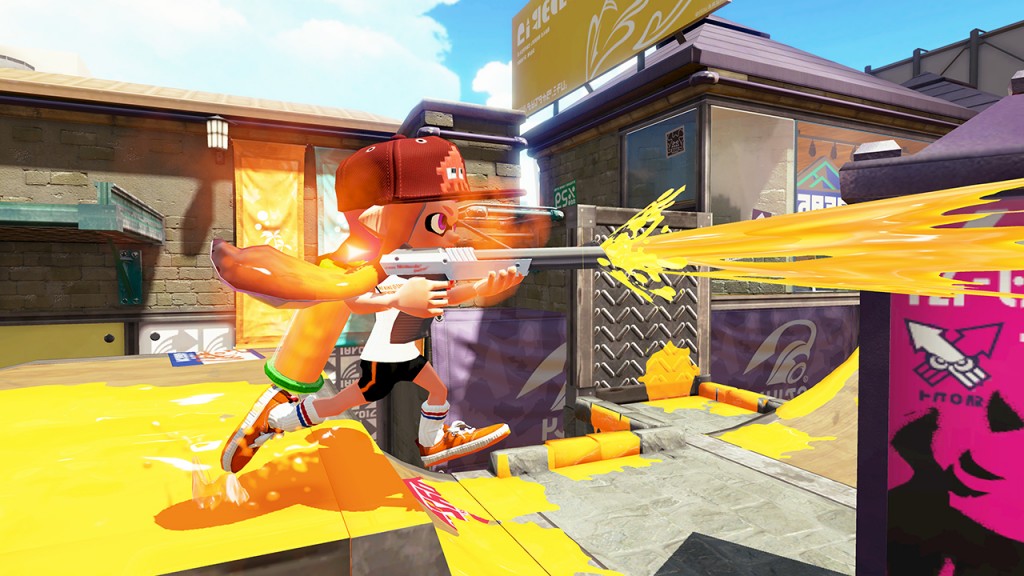
The other available mode is the “Battle Dojo,” and it is the only way two players can play the same copy of the game, with one player on the GamePad and the other using a Remote/Nunchuk or Pro Controller and the TV screen. This mode pits both players head-to-head in a balloon-popping contest. It’s better than no local multiplayer options at all, but barely.
As I said, online play is the main attraction in Splatoon. When you go online, you have three options: join a random match, join a random ranked match (once you have reached level 10) or join one of your currently-online friends in a non-ranked match… as long as there’s space in their current room. After a match, you have the option to stay in the room or leave. If you stay, you will be up against everyone else who also stayed plus any new players who have filled in the gaps of those who did not.
For the most part this works fine, but the hoops that you have to jump through to play with a group of friends could be streamlined. As it stands now, one of you has to join a room and then everyone else tries to join their room. If they don’t make it, they will have to wait until the match is done and hope that someone else drops out. I mentioned earlier that three minutes can fly by when you’re in a Turf War, but when you’re waiting for a Turf War, those same three minutes can last forever. There are also times when there seems to be nobody else (or at least seven other players) online and you just sit there, waiting. It doesn’t happen often, but it is still a noticeable weakness to Splatoon‘s online focus.
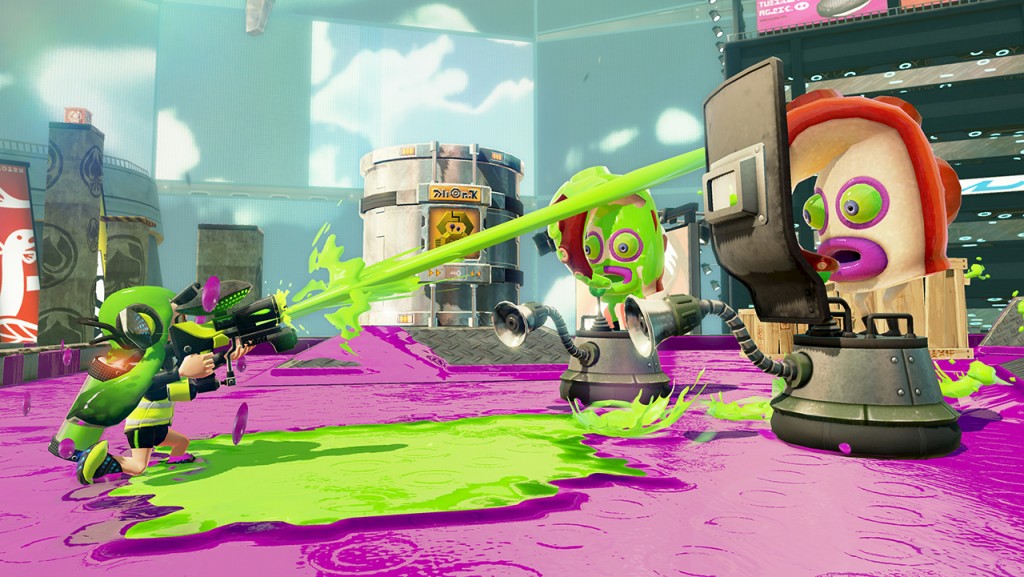
Minor matchmaking issues aside, Splatoon more than delivers on Nintendo’s unique vision of how online shooters can play. Randomizing teams and maps between each three-minute match keeps the mix fresh whether you only want to play a handful of games or have a marathon session. If there is a glaring flaw, it is the fact that only one player in a household can play it at a time. This game is just too fun to be restricted to solo play, and the Battle Dojo isn’t enough.
Pros: Fun, quick-playing online battles, focused not on kills but on turf-claiming
Cons: Limited offline options; not a “family game” in the local multiplayer sense



















